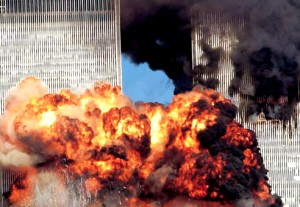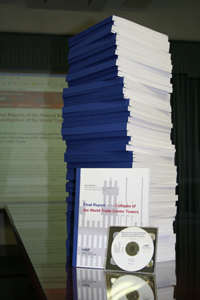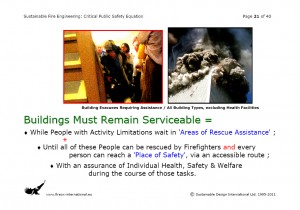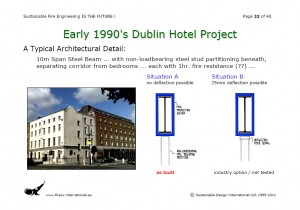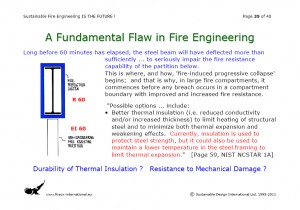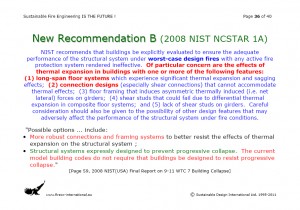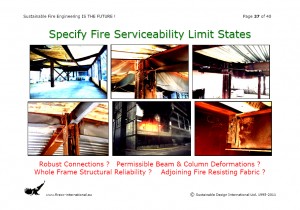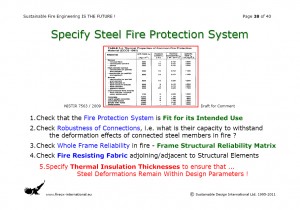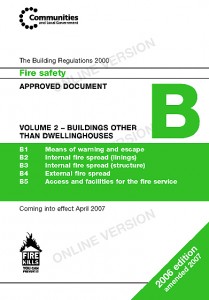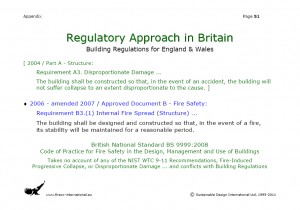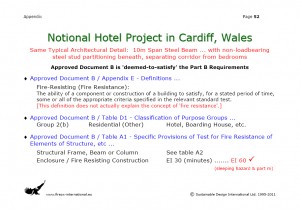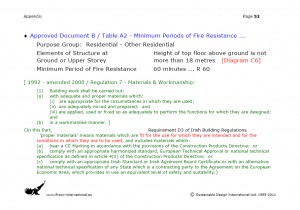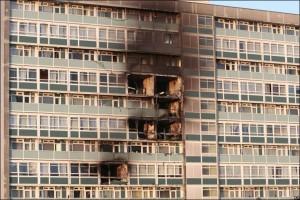See the 1st Series of Posts on the 2005 NIST WTC 1 & 2 Collapse Recommendations … which began, here, towards the end of 2011 …
2011-10-25: NIST’s Recommendations on the 9-11 WTC Building Collapses … GROUP 1. Increased Structural Integrity – Recommendations 1, 2 & 3 (out of 30)
.
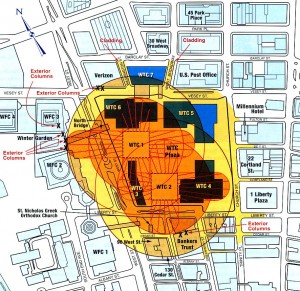
.
2012-01-18: SOME PRELIMINARY COMMENTS …
1. World Trade Center Building 7 was a 47 Storey Office Building located at the north -eastern tip of the WTC Complex in Lower Manhattan, New York City. It had been built on top of an existing Consolidated Edison of New York electric power substation, on land owned by the Port Authority of New York and New Jersey.
On Tuesday, 11 September 2001 … WTC Building 7 was on fire for almost seven hours … from the time of the collapse of WTC Tower 1 – North Tower, just before 10.30 hrs (local time), until 17.21 hrs … when WTC 7 failed completely, collapsing progressively as a result of ‘real’ fires – as distinct from ‘standard test’ fires – on many floors.
There were only two certainties on that fateful day (9-11) … the Fire-Induced Progressive Collapse of WTC Building 7 could no longer be ignored by the International Fire Science and Engineering Community … and the ‘reality’, which Modern Fire Engineering must now confront, was significantly altered. Secondly, it is NEVER acceptable to a general population for buildings to collapse !
Later in 2008, the Mumbai ‘Hive’ Attacks would add a sinister new ingredient to the standard threat profile for buildings, their occupants, and emergency services.
However, long before 9-11 and Mumbai, the growing complexity of modern communities and their rapidly evolving architectural forms had left the Fire Engineer far behind, unable to respond to the new fire safety challenges posed.
.
2. The second of the NIST Publications being referenced in this New Series of Posts is as follows …
NIST (National Institute of Standards and Technology). August 2008. Federal Building and Fire Safety Investigation of the World Trade Center Disaster: Final Report on the Collapse of World Trade Center Building 7. NIST NCSTAR 1A. Gaithersburg, MD, USA.
This 2008 NIST Report contains, in Chapter 5, a list of 13 Recommendations for Action (A-M), grouped together under the same 8 Subject Headings used in the 2005 NIST Report (NCSTAR 1) …
i) Increased structural integrity … Recommendation A ;
ii) Enhanced fire endurance of structures … Recommendations B, C, D & E ;
iii) New methods for fire resisting design of structures … Recommendations F & G ;
iv) Improved active fire protection … Recommendation H ;
v) Improved building evacuation … Long before its collapse, all occupants/users had evacuated WTC 7 … No Recommendation ;
vi) Improved emergency response … Recommendation I ;
vii) Improved procedures and practices … Recommendations J & K ; and
viii) Education and training … Recommendations L & M.
NIST has clearly stated that “the urgency of these Recommendations is substantially reinforced by their pertinence to the collapse of a tall building that was based on a structural system design that is in widespread use”.
.
3. The Colour Coding of Texts which I am using in this new series of posts … where NIST has presented new texts relating to WTC Building 7, these are shown in blue … where NIST has chosen to reinforce earlier texts from the 2005 Report on the WTC Towers 1 & 2 Collapses, these are shown in black. The important new paragraphs describing the critical relevance of WTC Building 7 are shown in red.
Please pay particular attention to these Red Paragraphs. Having carefully digested their contents … then if, by any chance, you happen to encounter somebody who still insists that the NIST 9-11 WTC Recommendations have no relevance to the design, construction, management and operation of ALL Buildings … that person is either living in Alice’s Wonderland … or he/she has never bothered to read the NIST Recommendations in the first place !!
.
4. While it is still essential to distinguish clearly between the two closely related structural concepts below … I would like to take this opportunity to bring to your attention a necessary and important modification … more, a refinement … to the definition of Fire-Induced Progressive Collapse …
Disproportionate Damage
The failure of a building’s structural system (i) remote from the scene of an isolated overloading action; and (ii) to an extent which is not in reasonable proportion to that action.
Fire-Induced Progressive Collapse
The sequential growth and intensification of structural distortion and displacement, beyond fire engineering design parameters, and the eventual failure of elements of construction in a building – during a fire and the ‘cooling phase’ afterwards – which, if unchecked, will result in disproportionate damage, and may lead to total building collapse.
This modification/refinement recognizes the following … that Fire-Induced Progressive Collapse may commence long before any breach occurs in a Fire Compartment Boundary … that, as a result of rampant commercial pressures in our societies, the tendency is for Compartment Volumes to become far too large to be any longer effective … and in the case of a Sustainable Building, for example, where natural patterns of air movement in buildings are used for either heating or cooling purposes, there may be no Compartments at all !
Restricting the application of one or both of these structural concepts, in law, to Multi-Storey Buildings, i.e. in many jurisdictions, those buildings having 5 or more storeys … is a purely arbitrary cut-off point.
CIB W14’s Research Working Group IV: ‘Structural Reliability & Fire-Induced Progressive Collapse’ would argue, rationally, that both of these concepts are fundamental to all structural fire engineering design.
.
5. Structural Fire Engineering is concerned with those aspects of fire engineering which relate to structural design for fire, and the complex architectural interaction between a building’s structure and fabric, i.e. non-structure, under conditions of fire and its immediate aftermath.
As Chair of CIB W14’s Research Working Group IV … I will shortly be making a Workshop Presentation in Europe, the aim of which will be to set the scene for the launch of an International CIB W14 Research WG IV Reflection Document; the specific objective of the Presentation, however, will be to accurately describe the phenomenon that is Fire-Induced Progressive Collapse … and to outline a necessary new design approach which will fulfil future requirements, legal and otherwise, concerning adequate resistance to this phenomenon.
It will be shown that the new design approach is fully compatible with the Recommendations contained in the 2005 and 2008 NIST Reports on the 9-11 World Trade Center Buildings 1, 2 & 7 Collapses – NCSTAR 1 & NCSTAR 1A.
.
2008 NIST WTC 7 RECOMMENDATIONS (Final Report NCSTAR 1A)
5.1 GENERAL
In its final report on the collapse of the World Trade Center Towers (NIST NCSTAR 1), NIST made 30 Recommendations for improving the safety of buildings, occupants, and emergency responders. These encompass increased structural integrity, enhanced fire endurance of structures, new methods for fire resisting design of structures, improved active fire protection, improved building evacuation, improved emergency response, improved procedures and practices, and education and training.
WTC 7 was unlike the WTC Towers in many respects. It was a more typical tall building in the design of its structural system. It was not struck by an airplane. The fires in WTC 7 were quite different from those in the Towers. Since WTC 7 was not doused with thousands of litres of jet fuel, large areas of any floor were not ignited simultaneously. Instead, the fires in WTC 7 were similar to those that have occurred previously in several tall buildings where the sprinklers did not function or were not present. These other buildings did not succumb to their fires and collapse, because they were of structural designs that differed from that of WTC 7.
The Investigation Team has compiled a list of key factors that enabled ordinary fires to result in an extraordinary outcome. In so doing, the Team recognized that there were additional aspects to be included in the content of some of the earlier 30 Recommendations.
Based on the findings of this Investigation, NIST has identified 1 New Recommendation and has reiterated 12 Recommendations from the Investigation of the WTC Towers.
The urgency of the Prior Recommendations is substantially reinforced by their pertinence to the collapse of a tall building that is based on a structural system design that is in widespread use. A few of the Prior Recommendations have been modified to reflect the findings of this Investigation.
The partial or total collapse of a building due to fires is an infrequent event. This is particularly true for buildings with a reliably operating active fire protection system, such as an automatic fire sprinkler system. A properly designed and operating automatic sprinkler system will contain fires while they are small and, in most instances, prevent them from growing and spreading to threaten structural integrity.
The intent of current practice, based on prescriptive standards and codes, is to achieve life safety, not collapse prevention. However, the key premise of NIST’s Recommendations is that buildings should not collapse in infrequent (worst-case) fires that may occur when active fire protection systems are rendered ineffective, e.g. when sprinklers do not exist, are not functional, or are overwhelmed by the fire.
Fire scenarios for structural design based on single compartment or single floor fires are not appropriate representations of infrequent fire events. Such events have occurred in several tall buildings resulting in unexpected substantial losses. Instead, historical data suggests that infrequent fires which should be considered in structural design have characteristics that include: ordinary combustibles and combustible load levels, local fire origin on any given floor, no widespread use of accelerants, consecutive fire spread from combustible to combustible, fire-induced window breakage providing ventilation for continued fire spread and accelerated fire growth, concurrent fires on multiple floors, and active fire protection systems rendered ineffective. The fires in WTC 7 had all of these characteristics.
NIST believes the Recommendations are realistic, appropriate, and achievable within a reasonable period of time. NIST strongly urges that immediate and serious consideration be given to these Recommendations by the building and fire safety communities in order to achieve appropriate improvements in the way buildings are designed, constructed, maintained, and used – with the goal of making buildings safer in future emergencies.
A complete listing of all 13 Recommendations (Recommendations A through L) based on this Investigation follows. Under a few of the Recommendations, the pertinent lesson from the reconstruction of the WTC 7 Collapse is reflected in the form of a modification. For the 12 Reiterated Recommendations, the pertinent codes, standards, and organizations were listed in Table 9-1, and Tables 9-2a through 9-2c of NIST NCSTAR 1 and are not repeated here. For the 1 New Recommendation, B, this information is provided in the text.
.
5.1.1 GROUP 1. Increased Structural Integrity
The standards for estimating the load effects of potential hazards (e.g. progressive collapse, wind) and the design of structural systems to mitigate the effects of those hazards should be improved to enhance structural integrity.
NIST WTC 7 Recommendation A (NCSTAR 1 Recommendation 1).
NIST recommends that: (1) progressive collapse be prevented in buildings through the development and nationwide adoption of consensus standards and code provisions, along with the tools and guidelines needed for their use in practice; and (2) a standard methodology be developed – supported by analytical design tools and practical design guidance – to reliably predict the potential for complex failures in structural systems subjected to multiple hazards.
Relevance to WTC 7: Had WTC 7 been expressly designed for prevention of fire-induced progressive collapse, it would have been sufficiently robust to withstand local failure due to the fires without suffering total collapse.
.
5.1.2 GROUP 2. Enhanced Fire Endurance of Structures
The procedures and practices used to ensure the fire endurance of structures should be enhanced by improving the technical basis for construction classifications and fire resistance ratings, improving the technical basis for standard fire resistance testing methods, use of the ‘structural frame’ approach to fire resistance ratings, and developing in-service performance requirements and conformance criteria for sprayed fire resisting materials.
NIST WTC 7 Recommendation B (New)
NIST recommends that buildings be explicitly evaluated to ensure the adequate performance of the structural system under worst-case design fires with any active fire protection system rendered ineffective. Of particular concern are the effects of thermal expansion in buildings with one or more of the following features: (1) long-span floor systems* which experience significant thermal expansion and sagging effects; (2) connection designs (especially shear connections) that cannot accommodate thermal effects; (3) floor framing that induces asymmetric thermally-induced (i.e. net lateral) forces on girders; (4) shear studs that could fail due to differential thermal expansion in composite floor systems; and (5) lack of shear studs on girders. Careful consideration should also be given to the possibility of other design features that may adversely affect the performance of the structural system under fire conditions.
[ * F-6 Typical floor span lengths in tall office buildings are in the range of 12-15 metres; this range is considered to represent long-span systems. Thermal effects (e.g. thermal expansion) that may be significant in long-span buildings may also be present in buildings with shorter span lengths, depending on the design of the structural system.]
Building owners, operators, and designers are strongly urged to act upon this Recommendation. Engineers should be able to design cost-effective fixes to address any areas of concern that are identified by these evaluations. Several existing, emerging, or even anticipated capabilities could have helped prevent the collapse of WTC 7. The degree to which these capabilities improve performance remains to be evaluated. Possible options for developing cost-effective fixes include:
- More robust connections and framing systems to better resist the effects of thermal expansion on the structural system ;
- Structural systems expressly designed to prevent progressive collapse. The current model building codes do not require that buildings be designed to resist progressive collapse ;
- Better thermal insulation (i.e. reduced conductivity and/or increased thickness) to limit heating of structural steel and to minimize both thermal expansion and weakening effects. Currently, insulation is used to protect steel strength, but it could also be used to maintain a lower temperature in the steel framing to limit thermal expansion ;
- Improved compartmentation in tenant areas to limit spread of fires ;
- Thermally resisting window assemblies which limit breakage, reduce air supply, and retard fire growth.
Industry should partner with the research community to fill critical gaps in knowledge about how structures perform in real fires, particularly considering: the effects of fire on the entire structural system; the interactions between sub-systems, elements, and connections; and scaling of fire test results to full-scale structures, especially for structures with long-span floor systems.
Affected Standards: ASCE 7, ASCE/SFPE 29, AISC Specifications, and ACI 318. Development of performance objectives, design criteria, evaluation methods, design guidance, and computational tools should begin promptly, leading to new standards.
Model Building Codes: The new standard should be adopted in model building codes (IBC, NFPA 5000) by mandatory reference to, or incorporation of, the latest edition of the standard.
Relevance to WTC 7: The effects of restraint of free thermal expansion on the steel framing systems, especially for the long spans on the east side of WTC 7, were not considered in the structural design and led to the initiation of the building collapse.
.
NIST WTC 7 Recommendation C (NCSTAR 1 Recommendation 4).
NIST recommends evaluating, and where needed improving, the technical basis for determining appropriate construction classifications and fire rating requirements (especially for tall buildings) – and making related code changes now, as much as possible – by explicitly considering factors including:*
[ * F-7 The construction classification and fire rating requirements should be risk-consistent with respect to the design-basis hazards and the consequences of those hazards. The fire rating requirements, which were originally developed based on experience with buildings less than 20 storeys in height, have generally decreased over the past 80 years since historical fire data for buildings suggest considerable conservatism in those requirements. For tall buildings, the likely consequences of a given threat to an occupant on the upper floors are more severe than the consequences to an occupant on the first floor or the lower floors. For example, with non-functioning elevators, both of the time requirements are much greater for full building evacuation from upper floors and emergency responder access to those floors. The current height and areas tables in building codes do not provide the technical basis for the progressively increasing risk to an occupant on the upper floors of tall buildings that are much greater than 20 storeys in height.]
- timely access by emergency responders and full evacuation of occupants, or the time required for burnout without partial collapse ;
- the extent to which redundancy in active fire protection systems (sprinklers and standpipe, fire alarm, and smoke management) should be credited for occupant life safety ;*
[ * F-8 Occupant life safety, prevention of fire spread, and structural integrity are considered separate safety objectives.]
- the need for redundancy in fire protection systems that are critical to structural integrity ;*
[ * F-9 The passive fire protection system (including the application of fire protection insulation, compartmentation, and fire stopping) and the active sprinkler system each provide redundancy for maintaining structural integrity in a building fire, should one of the systems fail to perform its intended function.]
- the ability of the structure and local floor systems to withstand a maximum credible fire scenario* without collapse, recognizing that sprinklers could be compromised, not operational, or non-existent ;
[ * F-10 A maximum credible fire scenario includes conditions that are severe, but reasonable to anticipate, conditions related to building construction, occupancy, fire loads, ignition sources, compartment geometry, fire control methods, etc., as well as adverse, but reasonable to anticipate operating conditions.]
- compartmentation requirements (e.g. 1,200 sq.m*) to protect the structure, including fire rated doorsets and automatic enclosures, and limiting air supply (e.g. thermally resisting window assemblies) to retard fire spread in buildings with large, open floor plans ;
[ * F-11 Or a more appropriate limit, which represents a reasonable area for active fire fighting operations.]
- the effect of spaces containing unusually large fuel concentrations for the expected occupancy of the building ; and
- the extent to which fire control systems, including suppression by automatic or manual means, should be credited as part of the prevention of fire spread.
Relevance to WTC 7: The floor systems in WTC 7 failed at lower temperatures because thermal effects within the structural system, especially thermal expansion, were not considered in setting the fire rating requirements in the construction classification, which are determined using the ASTM E 119 or equivalent testing standard.
.
NIST WTC 7 Recommendation D (NCSTAR 1 Recommendation 5).
NIST recommends that the technical basis for the century-old standard for fire resistance testing of components, assemblies and systems be improved through a national effort. Necessary guidance also should be developed for extrapolating the results of tested assemblies to prototypical building systems. A key step in fulfilling this Recommendation is to establish a capability for studying and testing components, assemblies, and systems under realistic fire and load conditions.
Of particular concern is that the Standard Fire Resistance Test does not adequately capture important thermally-induced interactions between structural sub-systems, elements, and connections that are critical to structural integrity. System-level interactions, especially due to thermal expansion, are not considered in the standard test method since columns, girders, and floor sub-assemblies are tested separately. Also, the performance of connections under both gravity and thermal effects is not considered. The United States currently does not have the capability for studying and testing these important fire-induced phenomena critical to structural safety.
Relevance to WTC 7: The floor systems failed in WTC 7 at shorter fire exposure times than the specified fire rating (two hours) and at lower temperatures because thermal effects within the structural system, especially thermal expansion, were not considered in setting the endpoint criteria when using the ASTM E 110 or equivalent testing standard. The structural breakdowns that led to the initiating event, and the eventual collapse of WTC 7, occurred at temperatures that were hundreds of degrees below the criteria that determine structural fire resistance ratings.
.
NIST WTC 7 Recommendation E (NCSTAR 1 Recommendation 7).
NIST recommends the adoption and use of the ‘structural frame’ approach to fire resistance ratings. This approach requires all members that comprise the primary structural frame (such as columns, girders, beams, trusses, and spandrels) be fire protected to the higher fire resistance rating required for the columns. The definition of the primary structural frame should be expanded to include bracing members that are essential to the vertical stability of the primary structural frame under gravity loading (e.g. girders, diagonal bracing, composite floor systems that provide lateral bracing to the girders) whether or not the bracing members carry gravity loads. Some of these bracing members may not have direct connections to the columns, but provide stability to those members directly connected to the columns. This Recommendation modifies the definition of the primary structural frame adopted in the 2007 supplement to the International Building Code (IBC). The IBC considers members of floor or roof construction that are not connected to the columns not to be part of the primary structural frame. This Recommendation ensures consistency in the fire protection provided to all of the structural elements that contribute to overall structural stability. State and local jurisdictions should adopt and enforce this requirement.
Relevance to WTC 7: Thermally-induced breakdown of the floor system in WTC 7 was a determining step in causing failure initiation and progressive collapse. Therefore, the floor system should be considered as an integral part of the primary structural frame.
.
.
END

